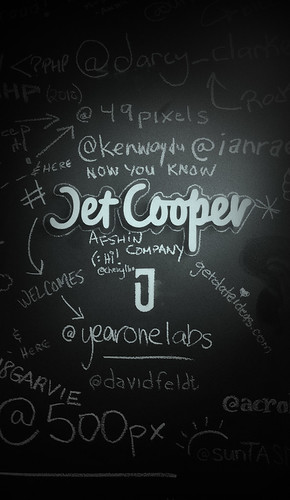Last night, my 1 and half year old didn’t fall asleep sleep until 11pm (normal bed time = 7:30pm) and then woke up at 2am and screamed till 5am. He is cutting his eye teeth. On top of that I have worked 16 hour days almost the entire week, I am on heavy coding deadline(s) and working constantly with guys in Indonesia & China all night long. It sucks, I’m super sleep deprived. But. I will make it all happen and still be there for my family.
You see, there is this weird meme in the startup world that says “families” + “startups” don’t work. Dave McClure doesn’t help with his family life mocking “Don’t do a startup, you will fail”.
I, in fact, also got an up-close look at this “anti-family-ism” recently at a young startup office where the mid-20s founders insinuated that “you can’t have kids and a startup”. It drove me nuts (to the point that I felt obliged to write this article).
First off there is a whole range of great entrepreneurs locally here who have successfully done both. David Crow (@davidcrow), Tara Hunt (@missrogue), Shyam Sheth (@shyamsheth), Michael Garrity (@mgarrity), myself (@dpmorel) and many others manage this struggle. It is definitely difficult but it is do-able. I’m sure lots of them have good tips (like… work after your kids go to bed… also when single folks are out at the bar).
In fact, this week I am here in New York at the Peek office. We split our offices with another startup, who have several young single founders. My new theory is this – YOU SHOULD NOT BE SINGLE AND FOUNDING A COMPANY.
Why?
- Startup founders are not sexy. They constantly look tired (and are constantly tired). Most entrepreneurs who have been in business for a few years have this disheveled, haggard look to them and wear the same clothes near every day (men and women alike). I have not had my hair cut in about 3 months and my sideburns may be a living creature. I am staring at a female founder in the office who has the classic entrepreneur red, weary eyes with giant bags under them.
- Your mind will flick over to some business problem on a dime, which makes you a boring date, and you’ll have a hard time keeping relationships going.
- You likely won’t have much time for other hobbies, so nobody will really be interested in you in the first place. “oh you work 18 hour days, yeah, very exciting”
- Entrepreneurs are basically living Zombies. They have no emotions. You keep hitting them with stuff and they won’t stay down or react. They just get up mindlessly and keep going forward with arms out. They also maybe eat brainz.
- When you have sex, you’ll probably get interrupted constantly by emergencies and “important people”
- You can’t get drunk – you don’t sleep enough for your body to handle it properly, you don’t have time to drink that much, and you probably have an important meeting first thing in the morning. And we all know how hard it is to find a new mate without the social lubricant of drinking.
I could go on. But generally new relationships take so much time… you have to keep this veneer of your “perfect self” and do things for the other person all the time and spend time with them on weeknights. No, no, no… its an impossible work-life balance.
Startup relationships + startup jobs = NO.
It feels like its a lot easier to do a startup with a long standing relationship and understanding partner who will support you emotionally and mentally. Having kids adds to this – all your problems melt away and disappear as you chase your kids around or play some silly game, a wonderful reprieve from the constant stresses and to-dos of your under-resourced, over-leveraged business.
How about the rest of you? How do you find balancing your startup gig + your current life stage? Other family folks – I’d love to hear how you balance your busy family + busy job in the comments?













